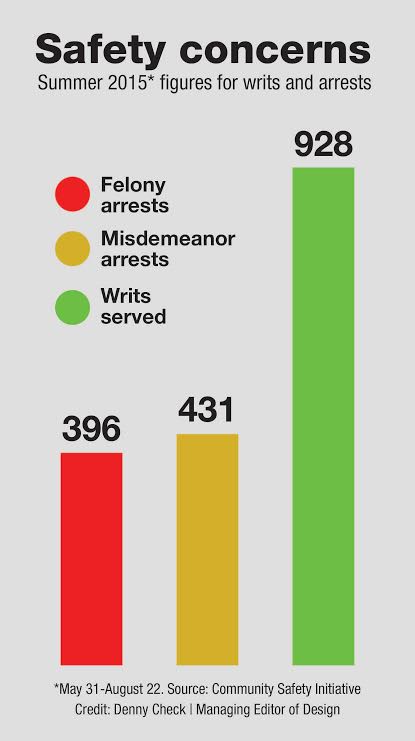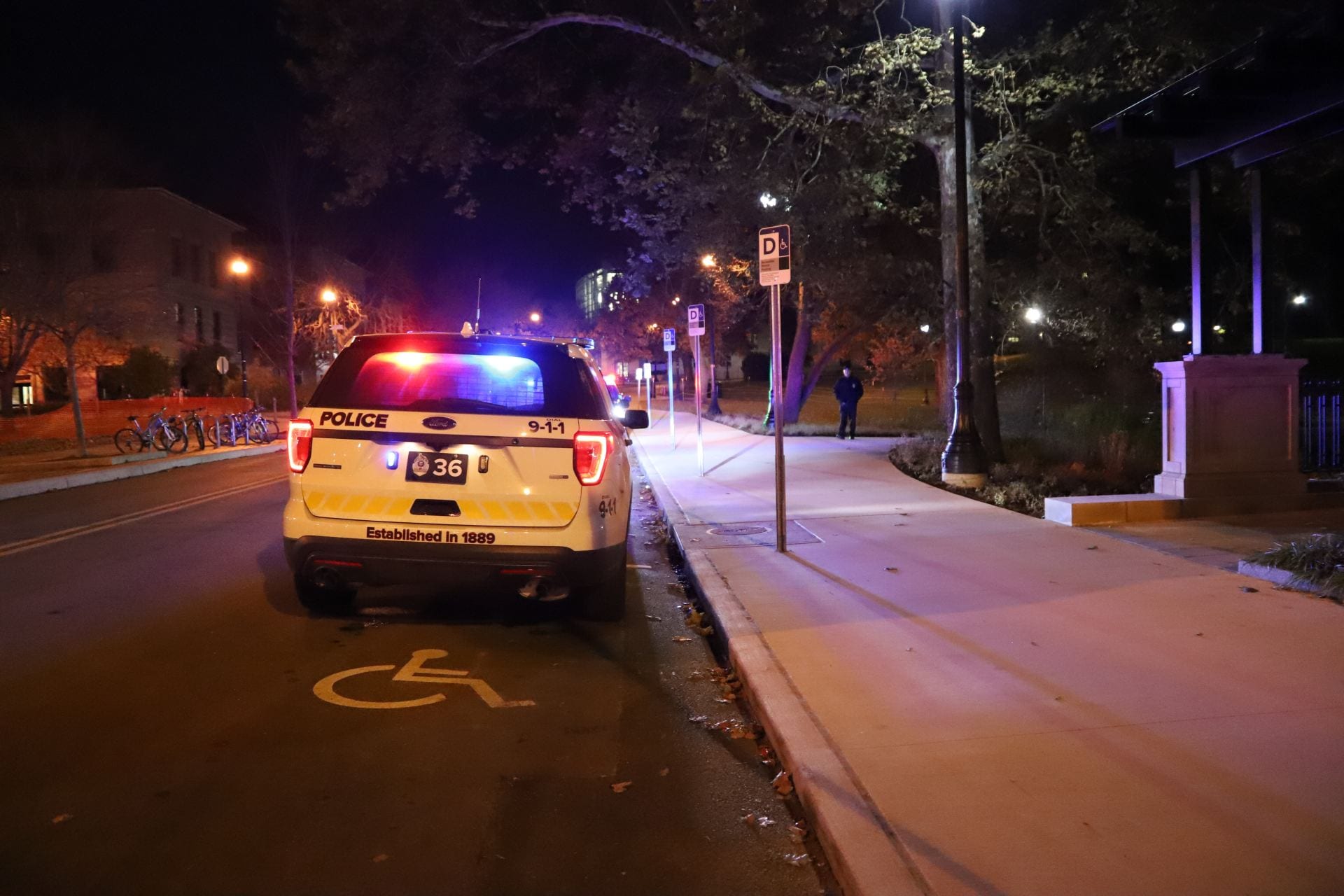
Credit: Denny Check / Managing Editor of Design
The arrest numbers for the Columbus Division of Police were low for the summer, which is a reason Ohio State has continued funding the Community Crime Patrol and launched Operation Safeguard.
Operation Safeguard allows student officers from the Student Safety Service to conduct nightly patrols in neighborhoods east of North High Street every day with extended hours on Friday and Saturday.
The CCP is a group of citizen patrollers working to increase safety in Columbus neighborhoods. Equipped with flashlights, two-way radios and their training, CCP patrollers deter criminals, build neighborhood awareness of crime prevention techniques, assist in the apprehension of suspects and provide first aid when needed. There are currently 35-40 patrollers in five near-campus neighborhoods, according to the CCP website.
There were 47 reported robberies near OSU and two arrests over a 107-day period last summer, according to the Columbus Police’s unofficial web portal as of Oct. 22.
This equates to a 4.2 percent arrest rate for the area, while the U.S. arrest average for robberies in 2014 was 29.6 percent, according to website Statista. The East North Central Midwest region of the U.S. sat at 21.7 percent, according to the FBI.
The CCP receives $100,000 annually from OSU, said Dan Hedman, spokesman for the Office of Administration and Planning.
“We have historically offered financial assistance to CCP because of its commitment to enhancing the safety of students, faculty and staff calling the University District home,” he said.
Despite the annual $100,000 donation, Ellen Moore Griffin, the executive director of CCP, said she thinks this needs to be increased. From 1990 to 2001, the CCP received $75,000 per year from OSU, and from 2002 onward, they received $100,000 per year, she said in an email.
“As costs have risen over the past 25 years, we have been forced to cut patrols in the off-campus area due to the lack of increased funding from OSU,” Griffin said. “We used to deploy two to three teams per night in the University District six nights per week. We now have one team out four nights per week.”
This isn’t something that Griffin or the CCP are taking lightly.
“We have asked for increased funding from OSU for the past eight years and have been denied any increase due to monies being used for other OSU crime-prevention programs,” Griffin said. “I would argue that money spent on a variety of crime-prevention efforts in the University District is the best approach.”
Some think that the city of Columbus needs to increase funding to the Columbus Police, but that isn’t necessarily a problem, according to Sgt. Rich Weiner of the Public Information Unit.
“The Columbus Division of Police holds weekly crime strategy meetings with all bureau commanders and some supporting staff,” Weiner said. “They discuss crime pattern advisory incidents in relation to all police precincts throughout central Ohio.”
Weiner said the city allocates money for the Community Safety Initiative, which totaled $579,000 and resulted in the following statistics for summer 2015, between May 31 and Aug. 22.
- 396 felony arrests and 431 misdemeanor arrests
- 928 writs served
- 104 firearms recovered, a four-year high
- Approximately 9,195 grams of narcotics confiscated, a four-year high for crack and powder cocaine
- 11,081 documented positive citizen contacts, a five-year high
- 45 stolen vehicles recovered, a five-year high
- $96,948 in currency seized
Despite the funding and initiatives, some people still don’t feel safe.
Mark Skinner, Dennison Place block watch captain, said he has tried to tackle this issue head-on, sending multiple emails to various individuals in Columbus, including to University President Michael Drake.
“The saddest part is we aren’t talking millions of dollars here,” Skinner said in an email to Drake. “A couple hundred thousand dollars would most likely restore the number of teams patrolling the area seven nights each week.”
Nancy Eisele, a fourth-year in marketing and a victim of a robbery over the summer, said she still carries the weight of what happened.
“I feel more vulnerable,” Eisele said. “I’m a pretty dominant personality and always have thought I could really handle anything. I used to walk home alone all the time, I’m a confident person and I know it shows when I walk, but after the incident it has kind of made me second guess myself. I don’t feel safe, ever.”
On top of the annual contributions to CCP, Hedman talked about Operation Safeguard, which started in Autumn 2014 and Spring 2015 semesters.
“The program continued this academic year as well and financially supports Ohio State students through employment by utilizing Student Safety Service officers to help provide the police with feet on the ground and extra eyes and ears to reduce crime,” Hedman said. “These students patrol, in vehicles and on foot, seven days a week during evening hours.”
During the last year, off-campus crime was down 20 percent, Hedman said, which he credits to CCP, Operation Safeguard, police and vigilant residents.
While there were 47 reported robberies off-campus during summer, Hedman said he thinks it is important to note that doesn’t signify the numbers for on-campus.
“With the recent release of our Annual Security and Annual Fire Safety Report (Clery Report), there were only eight robberies reported on campus during the 2014 calendar year,” Hedman said. “In addition, burglary on campus continues to steadily decrease with just four in 2014.”
Still with all being done, Eisele said she doesn’t think OSU is doing enough.
“I don’t think OSU is doing a good enough job, especially just making people feel safe in general,” Eisele said. “I think more blue lights off campus would help. I know at a lot of universities this is a major selling point.”


